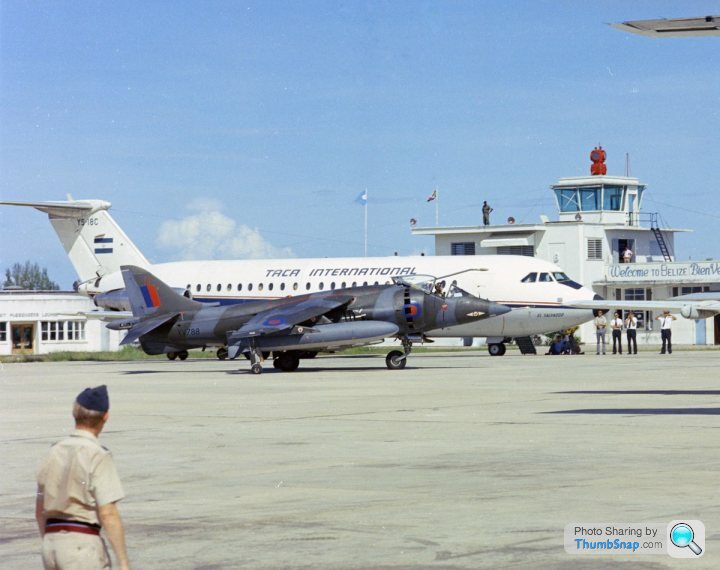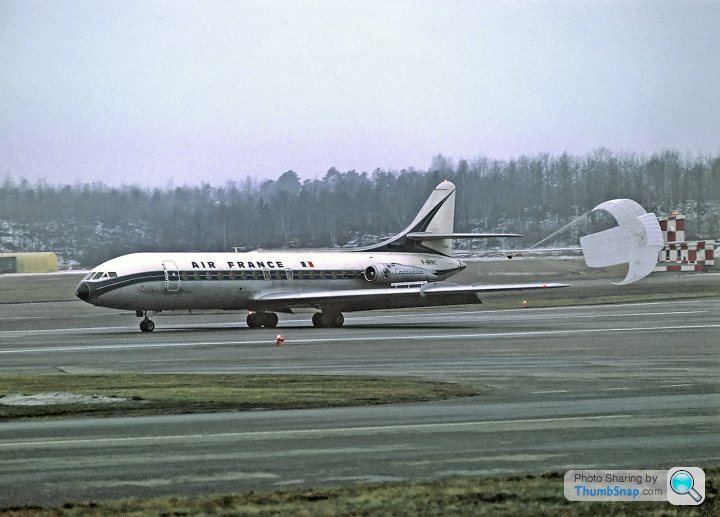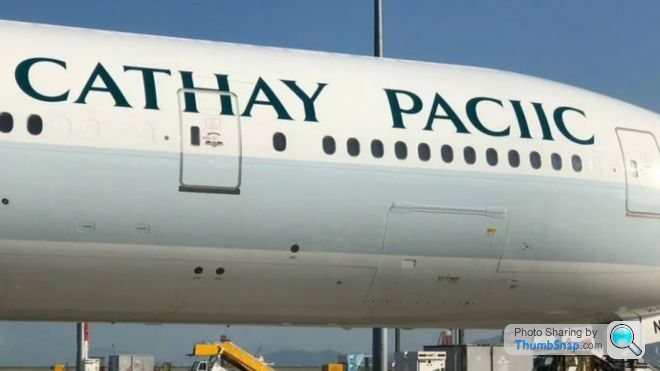Post amazingly cool pictures of aircraft (Volume 2)
Discussion
Ayahuasca said:
Belize, between April 1970 and May 1974 is as close as I can narrow it down...Photo looks like a GR1. XV788 was lost in December 1975 as a GR3.
http://www.ukserials.com/losses-1975.htm (credited as a 1417 Flight aircraft)
https://aviation-safety.net/wikibase/wiki.php?id=5...
"Crashed in the sea NW of Belize City, due to engine failure (LP Fan blade failure originating from damage caused by loose rivet shaft). Possibly due to a bird strike - aircraft ingesting a pelican (or similar large bird) that caused engine failure
Pilot - Flg. Off. B. C. Scott - ejected at 500ft 250 IAS(K), wings level, shallow dive..."
XV788 was first flown in March 1970 and delivered to the RAF in April 1970. Converted to GR3 standard in May 1974.
eta: TACA (of El Salvador) introduced the BAC One-Eleven to service in December 1966. It was their first jet airliner. They retired the type in June 1988, so that doesn't really help to narrow it down any...
further edit: That looks like a large capacity ferry tank under the wing of the Harrier. Does that put it early on (arriving after a long delivery/ferry flight) or just before or after it's conversion to GR3?
even further edit: For the spotters among us, XV788 was the aircraft shown on the box art for the Airfix 1/24th scale model kit...

Decal options for the kit? Hawker Harrier GR Mk.1a, Royal Air Force, 1 Sqn. XV788 (Wg Cdr. EJE Smith). RAF Wittering, Northants, 1973
...and to further muddy the waters? This chap... http://forums.airshows.co.uk/viewtopic.php?f=40&am... ...claims that he took a photo of XV788 in GR1 standard at RAF Wittering in July 1975. Someone's information is wrong here. Either it was converted into a GR3 in 1974, and then lost over Belize. Or it was in the UK as a GR1 in the summer of 1975? The more I dig around, the more confused I get...
Edited by yellowjack on Tuesday 18th September 17:51
Given the large tanks, the fact it is parked up in a civilian part of the airport, and is attracting quite a lot of interest, my money is on it being an early arrival. November 1975.
The people taking snaps are probably members of the Belize Airfix modellers club, excited at the arrival of a celebrity aircraft.
The people taking snaps are probably members of the Belize Airfix modellers club, excited at the arrival of a celebrity aircraft.
Harriers didn't deploy to Belize until Nov 1975, and it was 1 Sqn that did the initial deployment. They came home in Apr 1976 but were re-deployed to Belize in Jun 1977 becoming the HarDet.
Given that the a/c has the long range ferry tanks fitted, and given it has an AAR (Air to Air Refueling) probe fitted, and given that it's a 1 Sqn a/c, I would agree that the photo is of the 1975 initial deployment.
Also it's parked on the main pan in front of the air terminal - I remember the 'hides' being built towards the west side of the airport and south of the R/W so that also points towards it being the Nov 1975 deployment.
Given that the a/c has the long range ferry tanks fitted, and given it has an AAR (Air to Air Refueling) probe fitted, and given that it's a 1 Sqn a/c, I would agree that the photo is of the 1975 initial deployment.
Also it's parked on the main pan in front of the air terminal - I remember the 'hides' being built towards the west side of the airport and south of the R/W so that also points towards it being the Nov 1975 deployment.
Edited by Ginetta G15 Girl on Tuesday 18th September 17:55
yellowjack said:
...and to further muddy the waters? This chap... http://forums.airshows.co.uk/viewtopic.php?f=40&am... ...claims that he took a photo of XV788 in GR1 standard at RAF Wittering in July 1975. Someone's information is wrong here. Either it was converted into a GR3 in 1974, and then lost over Belize. Or it was in the UK as a GR1 in the summer of 1975? The more I dig around, the more confused I get...
No mystery. In the UK July 75 as GR1 (that chap), in Belize November 75 as GR1. Crashed shortly after arriving. That accident report is mistaken also in stating the the crash was into the sea NW of Belize City. There is not much sea in that direction. Well, there is, but it is a long way from Belize. Edited by yellowjack on Tuesday 18th September 17:51
Ayahuasca said:
No mystery. In the UK July 75 as GR1 (that chap), in Belize November 75 as GR1. Crashed shortly after arriving. That accident report is mistaken also in stating the the crash was into the sea NW of Belize City. There is not much sea in that direction. Well, there is, but it is a long way from Belize.
Begs to differ, but there is something of a mystery here. Two sources I found suggest that it was in fact a GR3 when it ingested a bird and crashed. And yet it appears, in all the photos any of us have managed to dig up of it, to be a GR1. So either the listings for it having been converted to, and crashed as, a GR3 are wrong, or there was some way in which the conversion to GR3 standard left it with a GR1's nose. Perhaps this was a "thing" with early conversions? Internal upgrades completed but the nose not? Perhaps "because going to Belize" it wasn't regarded as a priority to get the LRMTS nose?GR1 to GR1A? Improved from 190,000lb to 205,000lb thrust Pegasus 102 Engine.
GR1A to GR3? LRMTS (Laser Rangefinder and Marked Target Seeker) was one of the major improvements to the harrier incorporated in the re-designation to GR3 standard. Other improvements included the GTS (Gas Turbine Starter) getting an upgrade, and twin 4kVA alternators giving way to a single 12kVA unit.
This is where it gets interesting.
Ferranti tested the LRMTS in a Canberra in 1970. It then flew in a number of Harriers as part of further testing and development. XZ128 was the first Harrier GR3 built with LRMTS fitted at construction, in 1976. All I can find is that "several other airframes had been retrofitted" by 1976. All the remaining Harrier fleet had the LRMTS nose fitted by 1979.
In addition to alternators and GTS, and the LRMTS nose, the re-designation to GR3 standard was completed by the addition of a fin-mounted radar warning receiver (info-only system, the GR3 didn't get even the most basic defensive chaff/flare capability until Op Corporate in 1982), and a further improvement to engine power with the Pegasus 103 rated at 215,000lb.
And that was pretty much it for the GR3. It had reached the limit of improvement, and it began to be replaced by the GR5, commencing in April 1985 with the first flight of ZD318 at Dunsfold.
So I'm going to go out on a limb here, and suggest that XV788 had, indeed, been internally upgraded to GR3 standard with a more powerful engine, and upgraded GTS and alternators. But that it's conversion had stopped short of receiving the LRMTS nose. As such it was identified (quite likely incorrectly) by casual observers (such as myself, looking at period photos on a website) as a GR1/GR1A. Hence the labels attached to images of it at RAF Wittering and Belize Airport in 1975, fully a year after it's reported conversion to GR3 standard.
All very interesting for me, as I'm laid up with a broken leg and have a lot of time on my hands to do a bit of digging around. I only wish I had access to my uncle's aviation book collection as well as the internet, because there'd be lots of details in those books that aren't easily found (nor verifiable as accurate) on the web...
tight5 said:
yellowjack said:
Improved from 190,000lb to 205,000lb thrust Pegasus 102 Engine.
wow !
OK. So too many zeroes. Even the Pegasus 11-61 only rated 23,800lb thrust. Gawd knows what I was doing with those extra zeroes. I even typed it right first time, adding the extra zeroes and the ',' when I read it back to myself. And now I look silly.
Anyway. Here's a link to a photo of XV788 at RAF Leuchars in September 1974... https://abpic.co.uk/pictures/registration/XV788 ...and the description says it's a GR3, while it clearly still has the GR1/GR1A nose. So it's post-conversion, and also references the loss of the aircraft in Belize in 1975.
That's it now, I'm not doing any more digging for fear of being made to look silly again...
[flounce]
 [/flounce]
[/flounce]Details of various Pegasus engine power outputs here... http://www.harrier.org.uk/history/pegasus.htm ...and more (brief) details of build standards here... http://www.harrier.org.uk/history/history_producti...

Edited by yellowjack on Wednesday 19th September 13:55
You could be right. According to my references XV788 was converted to GR3 standard in Mar 1974 and destroyed on 1 Dec 1975.
GR3s started to be converted from the GR1a as early as Dec 1972 but the early a/c would have been test and development airframes. The majority were converted in late 1973 with the last being converted in Oct 1974 (XW922) - a total of 65 airframes. New build GR3s started in Mar 1976 (XZ128) with the last being delivered in Dec 1986 (ZD670) - a total of 40 airframes.
It appears that, while the LRMTS was fitted to a few airframes for trials and development purposes prior to 1976, it did not become standard fit until the delivery of the new builds from XZ128 on. Earlier airframes converted from the GR1a would be retrofitted. Additionally the RHWR receiver didn't become standard fit until 1976 on.
Apparently the designation GR3 came with the upgrade to the Pegasus 103.
GR3s started to be converted from the GR1a as early as Dec 1972 but the early a/c would have been test and development airframes. The majority were converted in late 1973 with the last being converted in Oct 1974 (XW922) - a total of 65 airframes. New build GR3s started in Mar 1976 (XZ128) with the last being delivered in Dec 1986 (ZD670) - a total of 40 airframes.
It appears that, while the LRMTS was fitted to a few airframes for trials and development purposes prior to 1976, it did not become standard fit until the delivery of the new builds from XZ128 on. Earlier airframes converted from the GR1a would be retrofitted. Additionally the RHWR receiver didn't become standard fit until 1976 on.
Apparently the designation GR3 came with the upgrade to the Pegasus 103.
hutchst said:
It wasn't only the early ones. Ask Bonnie Prince Charlie how he knows.
While the HS146 doesn't have thrust reverse, the accident at Islay which you are alluding to was more to do with coming in 30+ kts 'hot', with a 12kt tailwind, to a runway with an LDA (Landing Distance Available) of 4080ft, and touching down some 1500ft in!Gassing Station | Boats, Planes & Trains | Top of Page | What's New | My Stuff









